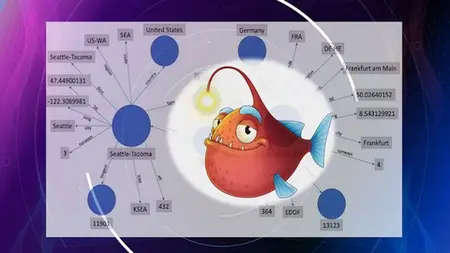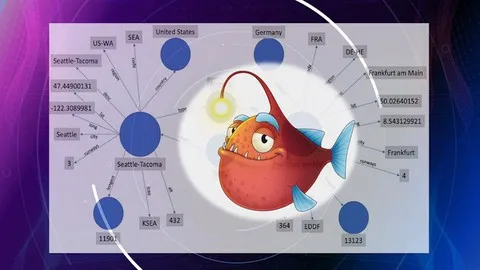Learning Sparql For Querying Rdf By Practice
Published 9/2024
MP4 | Video: h264, 1920x1080 | Audio: AAC, 44.1 KHz
Language: English | Size: 4.30 GB | Duration: 5h 43m
Published 9/2024
MP4 | Video: h264, 1920x1080 | Audio: AAC, 44.1 KHz
Language: English | Size: 4.30 GB | Duration: 5h 43m
Learn and grasp SPARQL querying language for dealing with RDF / Ontology
What you'll learn
Understand and familiar syntax and specification of SPARQL querying language
Learn the skills for query data conforming RDF data model
Enable you conmfortably using SPARQL to retrieve and update data
Enable you the foundation skills to make the best use of the retrieved data by SPARQL
Requirements
Basic knowledge on Semantics Web, RDF, SQL, Ontology
Description
SPARQL (pronounced "sparkle").SPARQL name is a recursive acronym for "SPARQL Prococol and RDF Query Language".SPARQL was not designed to query relational data (which already had SQL for decades), but to query data conforming to the RDF data model. Nowadays, more and more people are using the query language SPARQL to pull data from a growing collection of public and private data. Whether this data is part of a semantic web project or an integration of two inventory databases on different platforms behind the same firewall, SPARQL is making it easier to access it.In the words of W3C Director and web inventor Tim Berners-Lee, "Trying to use the Semantic Web without SPARQL is like trying to use a relational database without SQL."I has other courses showing you how to build up ontology through Protege - the open source ontology editor - and already mentioned some basic querying technics using SPARQL. This course is base on the great book "Learning SPARQL" authored by Bob DuCharme, would like to go through all of the detail contents written in the book, through live demo and practices on every querying samples.Through this course, you'll be able to focus on SPARQL querying language itself, the triple or ontology tool (e.g. Jena ARQ, Protege, or online editors, etc..) are not important, and I do hope you grasp the skills of using SPARQL to query your own knowledge graph with the effective querying statements.It's not a easy journey to learn and internalize a new language, like learning one 2nd foreign language, you need to put yourself in this language environment, so the live practice follow the course will be the key factor for your success!Good Luck!
Overview
Section 1: Introduction (Preface)
Lecture 1 Openging and Introduction
Lecture 2 Why SPARQL and Resources
Section 2: 1. Jumping Right In: Some Data and Some Queries
Lecture 3 Initial Data Query: 1) Jena (ARQ) Tool
Lecture 4 Initial Data Query (continued): 2) using ARQ
Lecture 5 Initial Data Query (contiuned): 3) Use Protege to Query Data
Lecture 6 More Realistic Data and Matching on Multiple Triples
Lecture 7 Searching for Strings. & What Could Go Wrong?
Lecture 8 Querying Public Data Source
Section 3: 2. The Semantic Web, RDF, and Linked Data (and SPARQL)
Lecture 9 What Exactly is the "Semantic Web"?
Lecture 10 URLs, URIs, IRIs, and Namespces
Lecture 11 RDF: 1) Storing RDF in Files
Lecture 12 RDF: 2) Storing RDF in Databases
Lecture 13 RDF: 3) Data Typing
Lecture 14 RDF: 4: Language Tags Labels
Lecture 15 RDF: 5) Blank Nodes
Lecture 16 RDF: 6) Named Graphs
Lecture 17 Reusing and Creating Vocabularies: RDF Schema and OWL
Anyone who want to equip the skill of RDF data querying language - SPARQL



